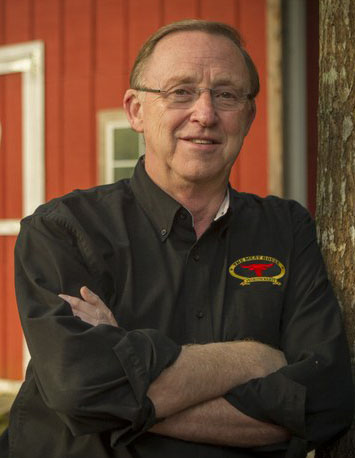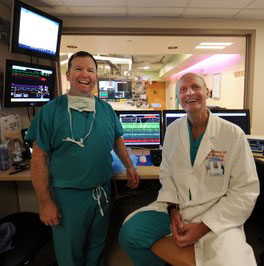

About five years ago, Craig Wilkins was feeling tired and breathless and decided to see his family doctor in Cary, N.C., before going on a trip.
Craig was otherwise healthy and had no history of heart disease, but his doctor discovered he had atrial fibrillation, a condition that can cause the heart to race, sometimes beating hundreds of times in one minute. For some, atrial fibrillation is annoying but not life-threatening. For Craig, the condition had gone undetected for so long that he had developed congestive heart failure.
After several attempts to regulate the heartbeat with cardioversion and with anti-arrhythmia medication, Craig’s heart was still falling out of rhythm. His cardiologist referred him to Paul Mounsey, MD, director of electrophysiology at UNC Hospitals. Dr. Mounsey performed a cardiac ablation on Craig’s heart. In an ablation, doctors use radiofrequency to destroy the damaged heart tissue causing the atrial fibrillation. Ablations are often successful, but in Craig’s case, they were not. Dr. Mounsey then collaborated with Andy Kiser, M.D., chief of the UNC Division of Cardiothoracic Surgery, to perform the Convergent Procedure.
Traditionally, surgeons such as Dr. Kiser have created scar patterns to disrupt the circuitry that causes atrial fibrillation arrhythmia, while electrophysiologists such as Dr. Mounsey have performed ablations. In the Convergent Procedure, developed by Dr. Kiser, an electrophysiologist and surgeon work together using miniature cameras, small catheters and electrodes to map out an individualized pattern that will work to reestablish normal rhythms in each patient.
Drs. Kiser and Mounsey have completed procedures on more than 100 patients since 2011. They have an 80 percent success rate, very high for complex arrhythmias.
Five years after Craig’s initial atrial fibrillation diagnosis and a year and a half after having the Convergent Procedure, he says his health is excellent. “I can’t believe how bad I used to feel,” says Craig. “I have energy and a desire to do things now.”
